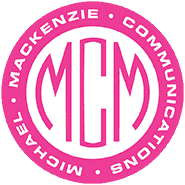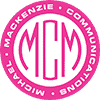I’m constantly getting challenged by clients to come up with less expensive solutions that still make them look like a a big player. With the broad availability of online printing, it becoming really easy for just about anyone to produce their marketing materials in four-color. The problem is that some vendors are running digitally and others are printing traditionally. Those of us who buy a lot of printing know and appreciate the difference. Most of my clients do not. So it is my job to play gate keeper.
I firmly believe there is a right and a wrong place to use both of these processes. And while all printers print from the same set of inks, not all printing is created equal. And that is why you need to be careful.
I’ve been testing online printers lately looking for vendors to complement my trusted local partners. I have had some good experiences (48hourprints.com), found some high quality performers (like sonicprint.com) and been burned (overnightprints.com). So here’s what you need to understand before you place an order:
Chances are if you are getting great prices online, your job is either being run digitally or gang run with other work. Find out which one you are getting. Digital can get you good quality but the image probably won’t be as crisp as if you were to run it traditionally (yes, there are some exceptions) and your options for paper stock are often fewer. Traditional printing looks sharper but if the printer isn’t careful about what projects are run together, there can be huge variations between the color red (or blue or green) you specified and what comes out on paper.
Ask about the paper. Very few online printers will give you a choice on paper stock. If something other than a #2 white sheet is your preference, then online may not be for you.
Check the coating. Many printers will “flood” varnish or UV-coat your documents. The reason they do this is because it makes the ink dry faster and then they can cut sooner. The result for you is usually a really shiny and now slightly thicker card. The problem is that if you had planned to write on that card, the kind of finish used may make this impossible. (As a rule, I stay away from UV-coating on anything except pocket folders.)
Odd sizes. I’ve noticed lately a proliferation of vendors producing cards in non-standard sizes. The post office will let you mail up to a 4.25″ x 6″ for a postcard rate but some vendors (like express copy) will make the card smaller because it allows them to get more cards out of a sheet of paper. That may be cheaper for them but costs you precious advertising space in the long run.
Just like fat-free latte, diet potato chips and weigh watchers’ pizza, there are just some things that are too good to be true. By now most of us know better than to use the free business cards from Vista Print for promoting anything other than perhaps our son’s dog sitting service. So when you’re having a tough time figuring out the best process for your printing, do what I often do: take a sample of that great piece you got in the mail to 2 different vendors and get their estimate. You can try this with online folks, too. They actually have CSRs and the ones that don’t, you probably don’t want to work with.


